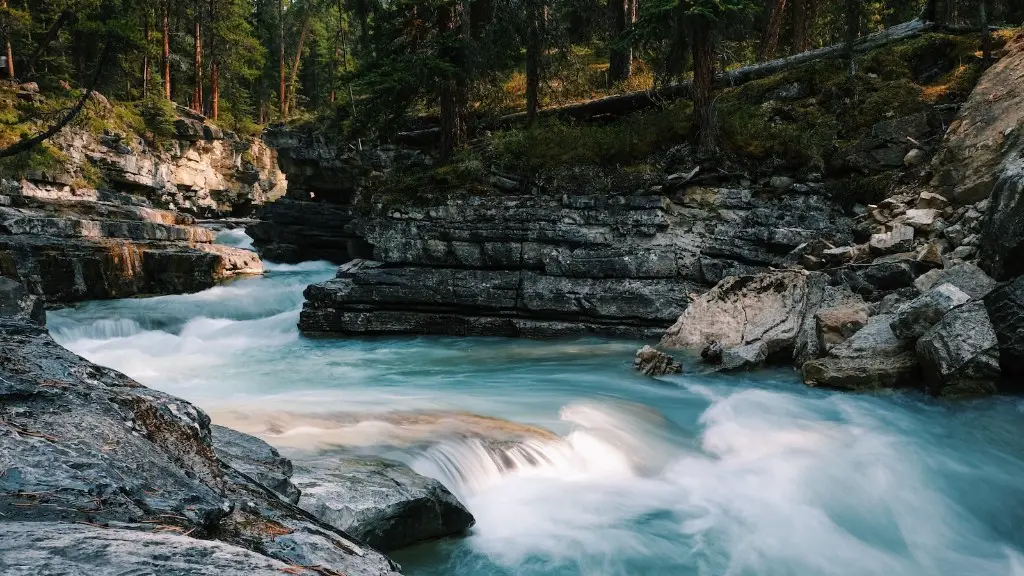Can I Swim in the Mississippi River?
Swimming in the Mississippi River may seem like a fun and adventurous activity, but is it safe? The river has had numerous industries located on its shores since the 1800s, and thus the quality of water has suffered. This article looks at whether swimming in the Mississippi River is safe, with insight from experts and data from environmental organisations.
The Mississippi River is the second longest river in the US. It runs through ten US states and is the fourth largest river in the world by discharge, with an average flow rate of 218,000 m3/s. Although the river is constantly changing and fluctuating, pollutants and contaminants continue to, at times, severely degrade the water quality, making it unsafe for swimming.
Among the factors involved, industrial activity is the most common source of water pollution in the river. Multiple industries have used the river as an open sewer and released hazardous substances, including chemicals, oil and ammonia. In addition, the large amounts of agricultural runoff have hindered water quality too. Heavy metals, pesticides, and pharmaceuticals have been detected in the river.
Contaminated water can influence human health and the local water ecosystem negatively. At some stretches, the pollution has become so severe that its effects on aquatic life have been irreversible. It’s estimated that over 70% of edible fish caught in the Mississippi contain unsafe levels of PCBs, dioxins, and DDT.
The US EPA monitors water resources, including the Mississippi River, to protect aquatic life and identify water pollution sources in order to take remedial steps. It established a 4350km long Mississippi River Water Quality System in order to protect water quality and reduce the human health risks from contaminated water.
US EPA and other environmental organisations publish reports on the water quality of the Mississippi River for the public. While some stretches of the Mississippi River have safe levels of pollutants and are suitable for swimming, water in other stretches of the river remain highly polluted and are not ideal for swimming.
Swimming in the Mississippi River is not illegal, but you should always check the water quality and potential pollutants before entering. Swimmers should take additional precautions, such as wearing protective clothing and staying aware of current water conditions.
Industrial Activity Along the Mississippi River
Industrial activity around the Mississippi has been an issue of much concern for environmentalists, as it has been the source of multiple pollutants and contaminants in the water. As early as the mid-1800s, various industries in the region had located their businesses on the banks of the river, releasing their wastewater directly in the water. This went unchecked for many years, leading to the current situation of a heavily polluted river.
Petroleum related industries, such as manufacturing plants and refineries, have consistently been the largest water polluters in the region. These industries often discharge their wastewater in the river directly, without proper treatment. In addition, agricultural activities, such as farming and ranching, have been known to bother the water quality of the river as well. Heavy metals, DDT, and other pesticides have been found in the water in high concentrations.
In order to tackle the pollution of the Mississippi, governments and organisations at all levels have introduced numerous initiatives and processes. The US EPA’s Mississippi River Quality System monitors the water quality along the river, and data from the system is available to the public on the EPA website.
Environmental Risks Associated With Swimming in the Mississippi River
Swimming in the Mississippi River can be dangerous for both your health and the river environment. Increased levels of pollutants and contaminants present in the water can affect the health of the people who come in contact with the water. Swimmers may be unaware of already existing levels of bacteria and toxins in the water, leading to potential health problems.
The pollution of the Mississippi River doesn’t only affect the water quality, but its wider impact on the environment cannot be overstated. Increasing contamination endangers aquatic life, with severe effects often taking place. Pollutants have a direct impact on the survival of aquatic species, and the river has faced a decrease in fish population over time.
Awareness and precaution is essential when planning to swim in the Mississippi River. It’s important to take into consideration the most important risk factors associated with swimming, such as local water conditions, existing pollutants and contamination in the river, as well as the presence of any industries releasing wastewater in the river upstream.
Government Standards and Regulations for the Mississippi River
The US EPA has established numerous standards for water bodies, including the Mississippi River. They are incorporated into The Clean Water Act, which specifies how much of a pollutant can be present in water. It sets standards for water quality, which every water body must adhere to in order to be suitable for swimming and recreational activities.
The Clean Water Act includes both national and state laws, as well as court orders and monitoring programs. In order to protect water quality and reduce the human health risks associated with it, the US EPA monitors and tests the water of the Mississippi River, as well as its rivers and streams, through its Mississippi River Water Quality System.
However, this only covers 4350km of the river, and there are still stretches of the Mississippi River with highly contaminated water. If you intend to swim in the Mississippi River, it is important to check the water quality standards, especially around potential industrial sites upstream.
Non-Government Efforts to Improve the Water Quality of the Mississippi River
In addition to government initiatives to tackle the pollution of the Mississippi River, there are numerous non-governmental initiatives and programs aimed at preserving and restoring the water. Oftentimes, the initiatives are run by local communities, who don’t have access to the same resources or support as their governments.
These initiatives and projects largely rely on volunteers and citizen scientists to work on educational campaigns, fund-raising efforts, or research programs related to water conservation, to help reduce the contamination levels of the Mississippi River.
In order to further mitigate the environmental consequences of swimming in the Mississippi River, swimmers can become involved in programs such as water monitoring and surveys specifically created for water stewardship. If you wish to support the efforts of citizen scientists, you can volunteer at organizations such as the Mississippi River Network, a collective of organizations and individuals discussing, researching and taking action against the water pollution of the Mississippi River.
Conclusion of Swimming in the Mississippi River
Swimming in the Mississippi River can be an enjoyable activity, however, it should not be done without caution. Water pollution is a major issue in the region, caused by industrial sites and a lack of enforcement. The US EPA has taken steps to closely monitor the water quality, however, certain stretches of the Mississippi River still remain highly contaminated and unsuitable for swimming.
If you intend to swim in the Mississippi River, you should always check the water quality beforehand. Monitor the current water conditions and make sure there are no specific pollutants or contaminations present in the water. Additionally, because there is no guarantee that the water quality is safe, you should take additional precautions, such as wearing protective clothing and swim in open areas.
Alternate Ways of Experiencing the Mississippi River
If you are looking for a way to experience the beauty of the Mississippi River without swimming in it, you have a variety of other activities to choose from. From canoeing and kayaking to cruising and fishing, there are multiple options for enjoying the river.
Canoeing and kayaking are some of the most popular ways of experiencing the Mississippi River. You can rent a canoe or kayak from local businesses and take a leisurely trip on the river. This can be a great way to enjoy nature and observe the wildlife on the banks of the river.
Cruising is another great way to experience the Mississippi River. It offers a unique perspective of the river and the surrounding landscape. You can either go on a short leisurely cruise, where you can observe the animals and listen to the river’s flowing sound, or opt for a guided tour to learn more about the region’s history and culture.
Fishing can be a great way to enjoy the Mississippi River. From paddle in fishing to bank fishing, you can try out different types of fishing in the river. However, it is important to remember that if the local water conditions are not suitable for swimming, it is also not suitable for fishing.
Restoring the Mississippi River’s Water Quality
Restoring the water quality of the Mississippi River is an ongoing challenge, and many efforts are underway by government departments, environmental organisations and local communities to mitigate and contain the effects of industrial wastewater on the river.
Some of the most important initiatives and programs include the US EPA’s Mississippi River Quality System, which monitors the water quality along the river and sets standards for it; and various non-governmental programmes led by local communities who, lacking financial resources, heavily depend on volunteers and citizen scientists to restore the river.
The US Army Corps of Engineers are also working on restoring the Mississippi River Basin. They are in charge of the Coastal Ocean Program, which aims to reduce pollutants from human activities and restore the ecosystem of the Mississippi, as well as other rivers and lakes in the region.
Finally, the Mississippi River Commission’s mission is to protect, preserve and restore the Mississippi River Basin so that all its inhabitants can enjoy a clean and healthy environment. They collaborate with private, public, and local entities to evaluate the current water quality and develop solutions to restore the river to its natural beauty.
Modern Solutions and Technologies For Restoring the Mississippi River’s Water Quality
As the pollution of the Mississippi River is an ongoing challenge, modern solutions and technologies are being used in order to monitor and reduce the environmental impact of wastewater and pollutants released in the river.
Sensors and drones can be used to track sources of pollution and monitor changes in water quality, allowing for a more efficient monitoring of the river. Additionally, AI-based programs and other modern technologies can be used to detect water pollution in rivers and streams.
Moreover, artificial wetlands and floating wetlands can be created in order to treat pollutants and filter out contaminants from the water. These solutions are proven efficient at removing various pollutants, such as heavy metals, hydrocarbons and nitrates, from water.
Finally, bacteria and fungi can be used to break down certain pollutants and contaminants, such as herbicides and oil. Microbes can degrade compounds found in wastewater more quickly and efficiently than traditional methods, and they can also be used to treat wastewater.
Conclusion
Swimming in the Mississippi River should not be taken lightly. Water quality in certain sections of the river is highly degraded, and swimmers should always be aware of potential pollutants and contaminated areas. Various initiatives and projects are underway to tackle the pollution of the river, and government bodies, non-governmental organisations, and local citizens are working together to protect and restore its water quality. Modern solutions and technologies can be used to monitor the water and mitigate and contain the environmental impact of wastewater. Swimming in the Mississippi River should be undertaken with caution, and considering the environmental and health risks involved, it is always beneficial to be informed and to practice caution when deciding to swim.


